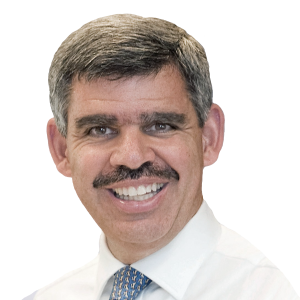The plight of the ‘permacrisis’ and what to do about it


Simply sign up to the Global Economy myFT Digest -- delivered directly to your inbox.
The writer is president of Queens’ College, Cambridge, and an adviser to Allianz and Gramercy
“I know it’s complicated.” That was European Central Bank president Christine Lagarde’s response to a question on the policy outlook earlier this month. Lagarde isn’t the only central bank chief signalling the complex road ahead as their institutions embark on the “last mile” of the battle against high inflation.
At last month’s Jackson Hole conference of central bankers, Federal Reserve chair Jay Powell concluded his speech by stating that “we are navigating by the stars under cloudy skies”. skies”. On Wednesday, he stated six times the need to “proceed carefully.”
The challenge for the ECB and the Fed goes beyond the economic fog in which they must design and conduct their policies. The stars guiding central bankers are themselves moving in unpredictable directions. It is part of the bigger set of challenges to domestic policymaking that has reared its ugly head over the past 15 years — headwinds compounded by weak growth and the fragmentation of the global economy.
These complications, together with the recent rise in oil prices, dissuaded the ECB from interrupting its rate hiking cycle on September 14. They hampered the Fed from signalling an end to its hiking cycle at this week’s monetary policy meeting, deepening markets’ realisation that these higher rates will be with us for longer. It is the same realisation in the UK where the Bank of England could only muster a 5-4 majority of policy-setters in favour of a rate pause.
Pity our central banks. Having been forced into a highly concentrated hiking cycle after mis-characterising inflation as “transitory,” they are uncertain about how much of the “long and variable” impact of tighter monetary policies have already played out in the economy. Their confidence in projections that have been consistently off the mark has withered. Bank regulation and supervision struggled as evidenced by financial turmoil earlier this year. And no big central bank has a handle as yet on the cumulative effects of their rate hikes on non-bank sectors with high debt levels such as commercial real estate.
The “last mile” on this inflation journey is the trickiest, made more so by the lack of consensus among economists on the stars that normally guide monetary policy. They disagree on the level of the neutral interest rate, or R-star — the level at which monetary policy neither accommodative nor restrictive. A growing number of economists are willing to question whether 2 per cent remains the right inflation target in a world going through so many structural changes. And then there is the Fed’s “monetary policy framework” which, while only three years old, requires an urgent update.
Fluidity in monetary policy is part of a bigger challenge that faces many countries. It is a phenomenon that former UK prime minister Gordon Brown, Nobel laureate Michael Spence, Reid Lidow and I analyse in a new book Permacrisis.
In the midst of the 2020 Covid lockdown, we regularly discussed on Zoom the seemingly never-ending crises tripping up economies’ ability to deliver that fundamental promise of a better life. With sluggish productivity, harmful inequality, cost of living crises, climate change, workers’ strikes, and failing global policy co-ordination, these deliberations have become even more urgent. A word kept coming up in our discussions to describe these catastrophic events, the insecurity felt, and the instability around us: permacrisis. We considered the causes and consequences. But more than that, we found hope in the promise and potential of overcoming it.
At the heart of the world’s economic and financial malaise are broken approaches to growth, economic management and governance. Taken together, they result in a cascade of crises. While these approaches are broken, they are not beyond repair. In the book, we detail measures that can, and must, change the economic and financial equation.
We can turn the corner on flagging global productivity and growth by harnessing scientific and technical innovations such as artificial intelligence and directing policy towards fixing supply constraints. We can improve economic management by addressing sins of poor analysis, communication, co-ordination and design. And as neoliberalism yields to neo-nationalism, and hyperglobalisation to fragmentation, there is still time to act before a new global disorder hardens.
On their own, renewed approaches to growth, economic management and the global order will only take us so far. But if we act on these three stormfronts together, we will be able to look through the clouds and, guided by stabilised stars, escape this permacrisis.
Letter in response to this article:
Interpreting the Fed chair’s celestial navigation quip / From Michael Galy, Alicante, Spain
Comments